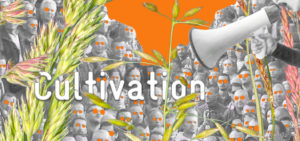The first time I wrote about a cultural event taking place in Kosovo it was the end of 2012. I had just arrived in this place that would become my city for at least the next seven years (and counting), and the Slovenian artistic collective Laibach, a musical branch of the famous conceptual arts collective NSK, was performing in Prishtina.
Held at the burnt parking lot that was once a core wing of the Palace of Youth and Sports — otherwise remembered as Boro-Ramiz — the experience was a strong introduction to what looked like a thrilling avangardist scene, though the same scene has rarely enjoyed such shows of big caliber in the past decade.
Throughout the event organized by the Stacion Center for Contemporary Arts, the band displayed everything in the nation symbology register: flags, anthems, solemn choreography and aesthetics… power. All brought to a sort of inaudible but omnipresent punk dimension in which all that state machinery was questioned while in the process of being displayed.
The venue, mysteriously burned in 2001 and never since recovered to its original grace, had just been reactivated a couple of months earlier through the large artistic intervention Prishtine – Mon Amour. Pushed forward by independent culture-makers Rina Kika, Tobias Bienz, and Astrit Ismaili, the event had brought dozens of artists to simultaneously perform for a full hour at the burnt hall, with many visitors curious to also see how this symbolic edifice had been transformed for the occasion.
Unfortunately though, as powerful and inspiring as these initiatives were, having attracted hundreds to enjoy mainly conceptual art, they were the exceptions — rather than the rule — when it comes to contemporary arts inviting the mass of regular citizens to a conversation in the public.
Looking back at the forums of what we refer to as contemporary arts, namely galleries or exhibition spaces — often wrongly perceived as the ultimate cherry on the top of cultural expression — it is not uncommon to find spaces that engage a very similar group of attendees and producers; by and large they remain limited, minoritarian, privileged, and sometimes too, without doubt, intellectually elitist.
This limited capacity to conversate with the diversity of others reminds me of my time working as a journalist in a local newspaper and my editor-in-chief — a tiny sharp woman with good command of the ship — who would easily dismantle bad submissions with a simple response of: “This is shit!” She used to tell me that if the average reader couldn’t understand what you are writing, then you haven’t explained it right.
I fear that all too often, contemporary artists and many culture-makers have failed to learn or remember that lesson from this world of communications, accepting an apparently satisfactory reality where they speak to a small elite.
These are issues that we at K2.0 have often tackled since our birth as a blogging platform giving space for critique and exchange; through our sixth printed magazine edition, Balkart, which was dedicated to arts and culture; our online magazine work, including in-depth one-on-ones with artists and cultural actors; and in our public debates organized around these topics.
As we began to think about our latest online monograph edition, it was precisely the capacity of the arts and culture to attract and engage “the masses” that captured our attention, and that ultimately became a common thread.
In this edition, “Cultivation,” we found ourselves exploring a variety of forms of artistic and cultural expression that we access, if not consume, in large, if not massive, numbers. Beyond the limitations of certain “artistic cults” or elites, these forms of expression have managed to go beyond the imaginary or physical walls of the exhibition room, and have become a medium to either expand, or to positively cultivate, an alternative narrative.
While not always aiming to reach the masses, their nature has nevertheless put them in the public sphere, as accessible forms of expression. We’re speaking music, street art, films — and even language.
One of the forms we look at is graffitti, a cultural expression we explore through the eyes of Skender Boshnjaku, who has documented graffitti in Kosovo for decades. An often mistreated heritage, in the story “The Writings on the Wall” we look at the past three decades of graffiti — as raw testimonies of the country’s recent histories.
Another form of cultural expression that is often neglected and less thought of as art because, perhaps, like graffitti, it naturally belongs to the streets, is hip-hop. In Ngadhnjim Avdylli’s story “Kosovar Hip-Hop Evolution,” K2.0 explores the brewing and evolution of this music genre that attracts thousands of young people. The engagement of rappers with social issues has often spoken to a number of generations across the ages and has been an avenue for those traditionally outside of societal and political decision-making to claim their space and influence social narratives.
It’s a phenomenon that is noticable across the arts and cultural scene; women in arts-making roles are increasing diversity and representation in the issues addressed, changing what is produced and consequently changing how certain topics are treated. Dafina Halili explores the liberation and feminization of the cultural space by women in the story “The Women Shaking Up the World of Art.”
Through this story, it becomes clear that the narratives established through arts and culture over the years will never be definitive, and therefore demand constant review and challenge with diversity as a key element.
Arts are, in this sense, a form of expressing, documenting or questioning our cultures, in plural. And in the same way there is no thing such as Kosovar art as a unique closed box of adjectives, there cannot be such a thing as Kosovar culture — in the singular. It is this singularity of the word that raises the notion of culture as something definitive, unchangeable, static, and completely homogenous. And nothing could be more wrong.
While our values as a society grow differently, revising our cultural production is crucial for self-growth. Yet today, the space for such artistic self-examination is often affected by economic austerity, lack of vision or coherent efforts in both the public and independent scenes and, not to forget, the comfort zones of culture makers and artists protected under the umbrella of inexistent critique.
It is precisely the absurdity of the absence of constructive critique in the cultural and artistic space that Artrit Bytyqi brings to the extreme in his satirical commentary “An Artist Without an Exhibition Review Is No Artist.”
The rampant “festivalization” of culture is something that has been a “cultivation” of its own, but not one that has paved the way for the creation of stronger cultural platforms where critique is not only welcomed, but encouraged. In a phenomenon that goes beyond Kosovo’s borders, well into this region, absorbing important funding and programming opportunities, the organization of once-a-year festivals replaces year-round programs, affecting the continuity of production and the exploration of new narratives.
The positive “cultivation” of permanent spaces, arts venues, music shops, radio stations and cultural centers in which to grow, exchange and inspire our cultural expressions on a daily basis, then become more necessary than ever before.
These are issues tackled through Nikola Vučić’s story “The Struggle for Cultural Space” and even in our special podcast episode of Konteksti, in which music lovers Arif Muharremi and Alush Gashi explore the state of independent music in Kosovo and the circumstances in which it is made possible — or impossible.
This brings me to another of our monograph’s feature stories, “Awakening Kosovo’s Cultural Heritage.” Valmir Mehmetaj explores the institutional neglect behind celebrating cultural heritage and its transmission to the younger generations; he imagines a future where young kids use virtual reality to experience a day in the sixth century, where heritage becomes a valuable medium for cultural creation and progress, and considers what it will take us to get there.
I want to think that the same capacity to imagine and create that helped humans survive in the darkest moments of history, is also more than enough to bring about a different discourse of ideas, narratives, new myths and artistic forms that speak to people, and for people. That enable us as a society to identify ourselves on the screen, in the arts space, in an old tradition today deconstructed and recontextualized, or in a song — however different we are.
Welcome to “Cultivation.”K
Feature image: Majlinda Hoxha / K2.0.

Back to monograph


